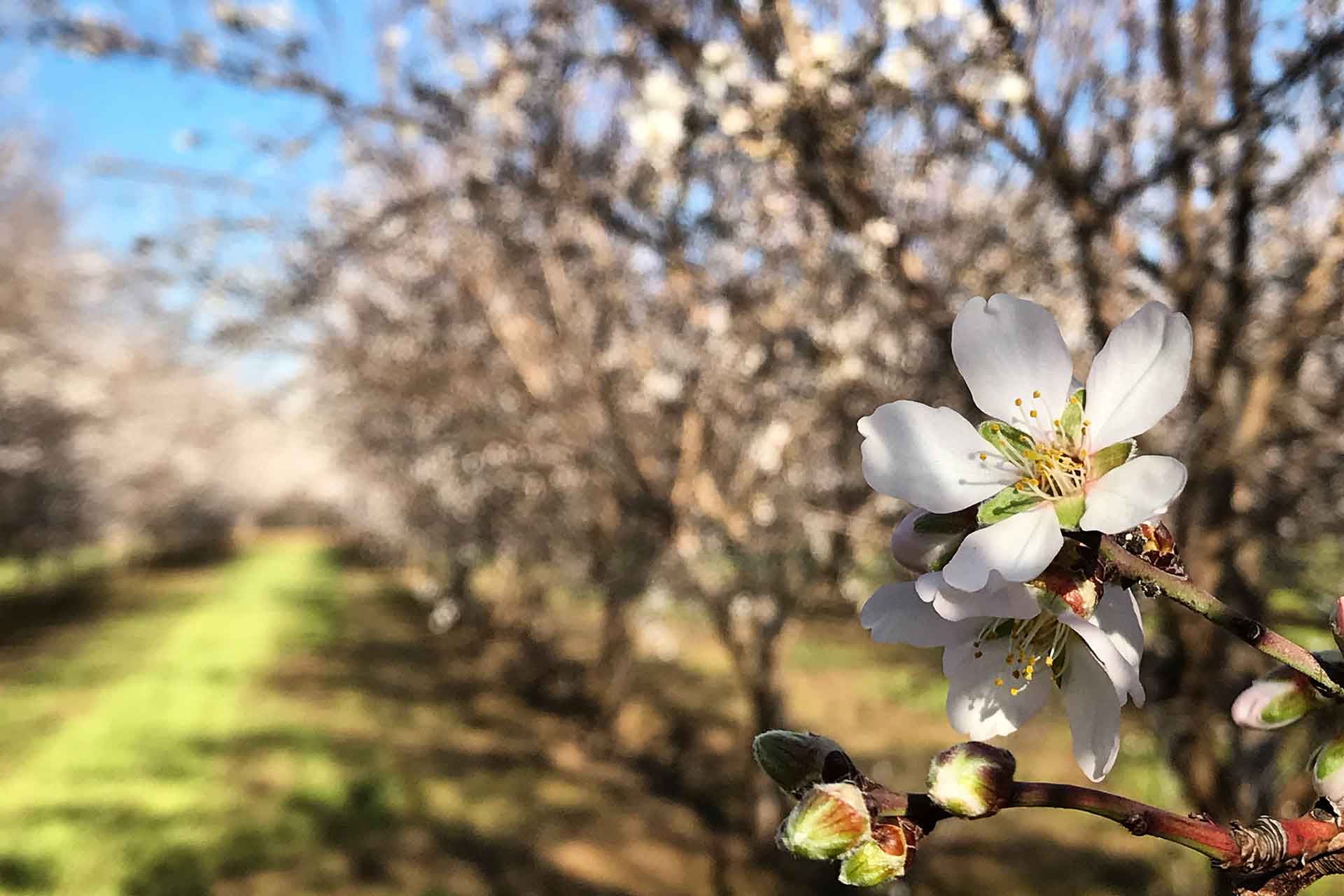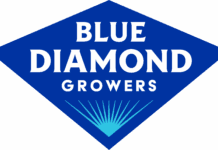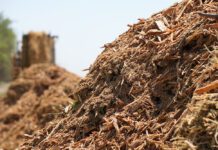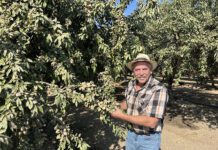A new round of statewide almond variety trials were started in 2014. There are three trials, one in Chico, Salida and Chowchilla. Each trial used rootstocks that were common to the area.
In Butte County, the trees are on the Krymsk® 86 rootstock. In Salida, Nemaguard rootstock was used because that area has problems with root knot nematode. In Chowchilla, Hansen peach/almond hybrid was used because it is more tolerant to drought and salinity.
Almond Research Trial
Joe Connell, University of California Cooperative Extension (UCCE) farm advisor emeritus in Butte County, helped establish the almond variety trial at California State University (CSU) farm in Chico, California.
“The main purpose is to observe varieties in semi-commercial conditions that breeders thought, might have promise,” Connell said.
This could also be identifying varieties that have a fatal flaw like problems with shaking, excessive disease problems, or poor yields. Consistently poor producers might be selections yielding in the bottom third of all the varieties in the trial.
About 30 varieties are being tested and researchers are evaluating the varieties for numerous traits:
- Hull split timing
- Varieties that shake well
- Number of mummies left on the tree
- Disease susceptibility
- Tree growth habit—upright or spreading
Variety trials are a winnowing out process where maybe the top third look promising enough to go further, Connell said.
Observation
Luke Milliron, UCCE orchard systems advisor for Butte County is currently the lead on the almond variety trial at the CSU farm.
The trial has a mix of both self-fertile and non-self fertile.
A big part of the research is observing the varieties during the season, watching for bloom timing and how they stack up against Nonpareil. Will they potentially be good pollinizers for Nonpareil?
There is one variety that blooms extremely early—before anything else. “It’s shocking, but it had really high yields this year. We don’t understand how that’s at all possible, since the variety is not self-fertile,” Milliron said.
Researchers are also monitoring for diseases like blast at bloom and hull rot later in the season, along with hull split timing for harvest and yield data. They have been collecting yields since 2016.
Shaking and nut removal are being closely monitored. Mummy counts were made after harvest in 2017, and some varieties were identified as having numerous mummies left on the tree. This could create problems with overwintering of navel orangeworm.
As the trial progresses, researchers are learning the optimum shake time.
“If you wait too long to shake them, then they’re too dry on the tree, and they don’t come off very well,” Connell said. “That was part of the problem in 2017. We had some varieties that had 400-500 mummies after shaking and that of course is unacceptable.”
The harvests were more timely in 2018 and 2019 and nut removal was much better, Connell said.
Bloom is being evaluated, too. “Full bloom on most of these varieties is pretty close to Nonpareil because most of the breeders are selecting varieties as Nonpareil pollenizers,” Connell said.
Field meetings are being held so growers can walk the orchard and see what the trees and the structure of the trees look like, Milliron said.
Bruce Lampinen’s lab is also measuring the light interception on the different varieties.
Varieties
Milliron said he sees self-fertile varieties having several advantages for smaller growers.
Smaller operations are contracting out harvest. Having contractors come once to harvest instead of two or three times is a huge advantage, Milliron said.
“It just massively simplifies things,” Milliron said.
But there are challenges to self-fertile, too, Milliron continued. Nonpareil can still demand a significant price advantage over other varieties, he added.
The research trial at CSU, Chico is on Krymsk® 86 rootstock which is by far the most common in the region.
“We do have one variety both on Hansen and Krymsk® 86,” Milliron said.
There are some self-fertile varieties that are now available on Krymsk® 86, Milliron said. “Growers are going to be able to get Independence on Krymsk® 86.”
The Independence and Shasta self-fertile varieties aren’t in the trial. Shasta came out after the trials started, and Independence was proprietary and was unavailable to include in the trial.
“Krymsk® 86 has been a total game changer in our region. It’s not bulletproof. Every rootstock is imperfect,” Milliron said.
Krymsk® 86 is highly susceptible to root knot nematode, but in general there isn’t a lot of root knot nematode in the Sacramento Valley. But anchorage and tolerance to wet feet are significant benefits of this rootstock.
“That’s why you see almond plantings going in where there was rice, that kind of thing,” Milliron said, adding self-fertile on Krymsk® 86 could be huge for Sacramento Valley growers.
Milliron is hopeful when they start a new trial that the Shasta self-fertile variety will be part of the project.
About 12 out of 30 varieties in the trial are self-fertile and a couple of them that are partially self-fertile. “Self-fertile varieties are ones that we’re particularly interested in following,” Connell said, to observe their potential.
Rootstock
Connell also has a rootstock trial in south Durham in Butte County that includes the region’s old standard rootstock, Lovell and the new standard, Krymsk® 86. Both rootstocks produce a tree that’s similar in size, vigor and yield.
The trial has six rootstocks in it and it’s currently in the tenth growing season.
“I have a pretty good track record on those rootstocks,” Connell said, so he knows how they’ve been behaving.
The rootstocks were all planted with the Nonpareil variety to see how it does on those rootstocks, Connell said.
Connell is looking at survival, anchorage, vigor, tree size on the rootstocks, blow over, and if the trees are straight or leaning.
“We’re also looking at nutrition of the Nonpareil variety on top of the different rootstocks,” Connell said.
Some of the rootstocks forage for nitrogen, potassium or boron differently than others. Some exclude salts better than others.
To date, there haven’t been any obvious root diseases in that trial. “We have had wet years, and so if there was something that was real susceptible to crown rot or root rot, we might have seen that. So far they’re all healthy, and there haven’t really been any differences in root health or root diseases on the rootstocks in the trial,” Connell said.
One thing that appears to be emerging from with Krymsk® 86 is it may have tolerance to oak root fungus.
In the past, growers would plant Marianna plum rootstock if the orchard had oak root fungus. That was problematic because Nonpareil can’t be grown on Marianna plum.
Krymsk® 86 isn’t immune to oak root fungus, but it’s holding up pretty well, Connell said.
Research Continues
A number of varieties are looking promising, but it’s still too early to make any determinations. Normally variety trials go 10-15 years to allow researchers to observe how the varieties hold up over time.
“The volatility and yield results from year-to-year so far have been tremendous,” Milliron said.
The research will continue for several more years. “We have yield data from 2016, 2017, 2018 and now 2019, and so it’s going to go for a number of years more,” Milliron said. “At some point we will probably be planting the next generation trial while we’re continuing to monitor these three sites.”
















